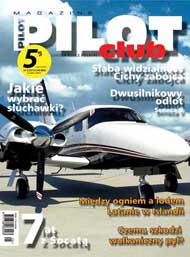An article from Pilot Club Magazine 5/2010 (translation)

The Puma's designing process has been finished and soon the first aircraft will fly into air. This aircraft is very advanced technologically so there was more to do than in other ultralights. Puma has retractable landing gear which is an exception in this class. Among the aircrafts of this size proper placement of the landing gear with its mechanism is a great challenge.
Moreover, it's planned to have this aircraft certificated. It means more demanding norms for many elements, since regulations for certified aircrafts are sharper than for amateur-built planes. It's very motivating because in our opinion an aircraft isn't just for flying but also it should be safe and comfortable. From our observations outcomes, that more and more aircraft enthusiasts appreciate and share our opinion. With all those followers of modern and inexpensive aircrafts in the mind we are designing unique airplanes in very high standard. For that reason Puma has got not only retractable landing gear but also is equiped with adjustable seats. Cabin width is really enormous - 1200mm. There's also provided place for such elements as rescue systems or aero tow for releasing gliders or advertisement.
Aircrafts are very complicated and because of that it often happens that particular stages need to be done several times before finding optimal solution. It's a result of the fact that designed parts are interconnected and some of them affect very strong on others. We spent a lot of time looking the optimal solution and thanks to that our aircraft stands out from other. The cockpit is spacious, pilot and the passenger sit higher than usual in this kind of planes. Thanks to that their position is even more comfortable; the visibility is tremendous what is very important, especially during the landing.
When the undercarriage designing process had finished and the masses distribution was known we could define the location of center of gravity (for both - released or retracted undercarriage). It allowed defining the perfect location of the engine what is extremely important due to proper balance. Then we could start designing its mounting and covering. Engine cover ensures optimal flow of the propeller stream and provides fresh air to the drive unit.
While the designing process had ended we started manufacturing stages. Some parts which are usually made manually now were produced with the use of modern, reliable and computer controlled CNC Router. This device was used for cutting various elements, e.g. sheathing, hinges and to drill rivet holes. Our experienced workers controlled CNC process however some stages (such as: sheathing bending, interference fit and riveting) had to been made manually.
During the building of the prototype it's often necessary to make major changes. In the case of Puma modifications were slight. Designing process had been done very accurately and because of that modifications made during manufacturing stage referred mainly to functionality and its design. The first aircraft is in the final stage of its construction and soon Puma will fly into air.
Meanwhile we had started to work over our new ultralight. Assuming that it will be a high-wing all-metal aircraft (with composite elements) we asked potential users and well-experienced pilots about their opinion about its look and equipment. We decided to build an aircraft in this design because all-metal constructions provide proper durability whilst composite elements improve aerodynamics.
During the consultations a design of our new plane has appeared - it will be a non-cantilever high-wing aircraft designed for leisure and it was named Panda. This aircraft, classical in its form is as well advanced technologically as Puma.
In our design work we focused on the optimization of the construction in order: to not complicate things, to provide the best performance as possible and to not make Panda too costly. We managed to achieve high cruising speed and short distances of start and landing. The lack of struts in this design decreases drag what allows to obtain better performance. Moreover, the T-tail configuration makes that aerodynamic is more efficient, whilst high cruising speed and two wing fuel tanks (2x50 liters) make range really enormous. And this isn't end...The flight is even more comfortable due to adjustable seats and control system with yokes what allows you to feel like in a top-shelf aircraft.
Panda and Puma were designed for different purposes and velocities. For that reason it had been decided that our high-wing airplane will have a fixed landing gear. We plan to equip Panda in slender pontoons so that it could be successfully used as a seaplane. Then it may provide completely new and even more exciting prospects. Moreover we intend to conduct the possibility of flight with dismantled doors what would make it ideal for enthusiasts of photography.
frezowanie pcv
